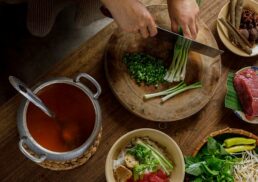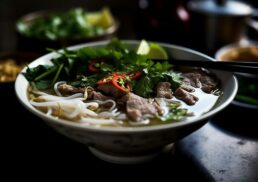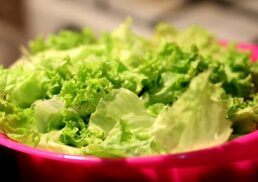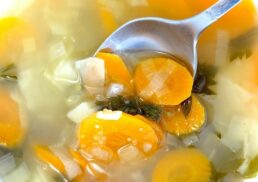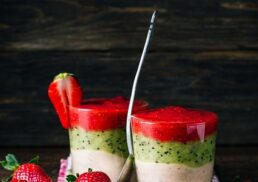Did you know that purée can be so much more than just a side dish? From sauces to desserts, and even baby food, purée is a versatile and flavorful way to elevate your cooking game. Ready to uncover the secrets to perfect purée every time? Let’s dive into the world of purée and unlock its full potential.
Table of Contents
Short Summary
Purée is a versatile thick liquid made from blending or processing ingredients, used in soups, sides and sauces.
Different puréeing techniques range from manual methods to high-tech appliances for best results.
Tips on seasoning, straining & smoothing make perfect purées every time, plus creative ways to use it!
The Basics of Purée
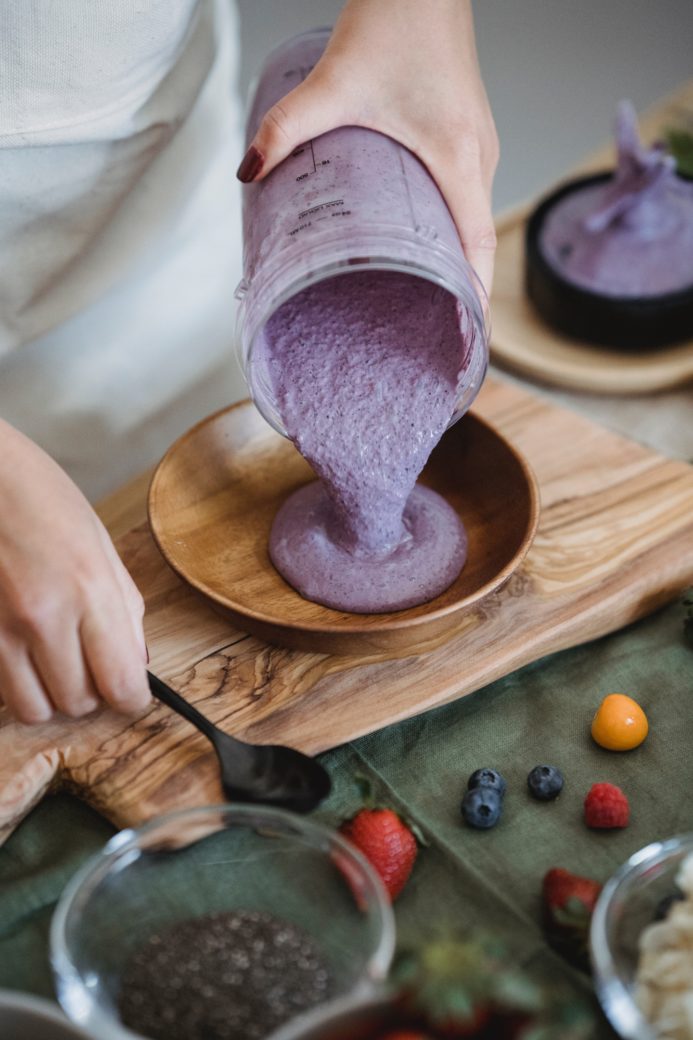
Purée, originating from the French word “purée” meaning “to purify, strain”, is a thick liquid made from blending or processing ingredients, typically cooked vegetables or fruit. It can be used in a variety of dishes, such as soups, side dishes, and sauces, giving them a smooth and creamy texture. With a history dating back to 1710, purée has been a staple in many cuisines, often used to describe sieved fruit or vegetables. Incorporating puree into your meals can elevate the flavors and textures, making them more enjoyable and nutritious.
But it’s not just about fruits and veggies; let’s explore the different types of purée and how to prepare them.
Cooked Vegetables
Puréeing cooked vegetables is a quick and healthy way to create a smooth, thick pulp that can be used in various dishes, such as cauliflower purée or sweet potato purée. To purée cooked veggies, simply cook them (boil, steam, or roast), add some liquid (like chicken or vegetable broth), and blend them up into a smooth, thick paste. Steaming cauliflower in chicken broth for purée, for example, gives it a nice flavor without needing to add cream to make it less thick.
Now that you’re familiar with puréeing cooked vegetables, let’s move on to incorporating cooked and sieved fruit into your repertoire, along with fresh fruit and other cooked food options.
Fresh Fruit
Fresh fruit purée is a delightful addition to your culinary toolkit. Some excellent choices for purée include:
Apples
Bananas
Peaches
Pears
Mangoes
Berries like blueberries, strawberries, and raspberries
To prepare fruit for puréeing, simply wash, peel, and cut it into small chunks. You can blend it, use a food processor, an immersion blender, or even go old school and mash or sieve it. Just remember to add enough liquid so it’s nice and creamy, and feel free to throw in some seasonings and flavorings to make it even tastier.
With the basics of fruit purée covered, let’s take a look at puréeing legumes and grains.
Legumes and Grains
Legumes and grains can also be puréed to create unique and delicious dishes. Some excellent options for puréeing include:
Red lentils
Orange lentils
Yellow lentils
Kidney beans
Black-eyed peas
Chickpeas
Corn
Whole grains like quinoa and brown rice
Puréeing legumes and grains not only helps you create tasty dishes, but it also makes your recipes more nutritious by breaking down the cell walls of the legumes and grains, making them easier to digest and absorb.
When puréeing legumes and grains, it’s essential to cook them well before blending and add enough liquid to ensure a smooth purée.
Now that we’ve covered the basics of purée, let’s explore different puréeing techniques.
Puréeing Techniques
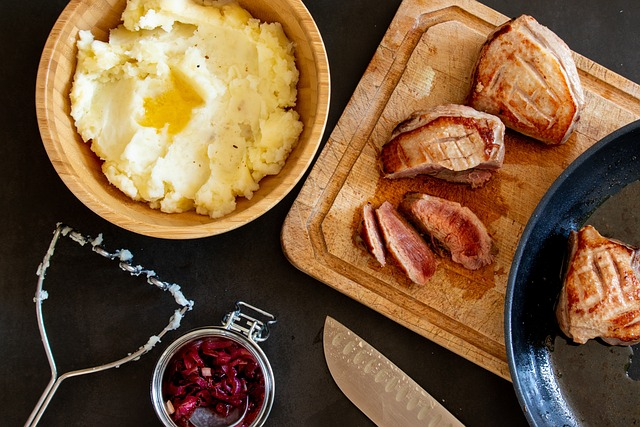
From manual methods to high-tech appliances, there are various techniques to achieve the perfect purée. Whether you prefer using:
a blender
a food processor
a potato masher
a sieve
a fork
simply your hands
Each method has its pros and cons. The key to perfect purée is finding the technique that works best for you and the ingredients you’re working with.
So let’s dive into popular puréeing techniques and learn how to get the right texture every time.
Blender or Food Processor
Blenders and food processors are popular choices for making purée thanks to their speed and efficiency, resulting in a smooth purée without much effort. The main difference between the two is that blenders are designed for liquids with fast-spinning blades, while food processors are for chopping and grinding with slower blades. To make a purée using a blender or food processor, pre-cook all the solid ingredients, add them to the appliance, blend until the desired consistency is reached, and remember to keep the blades submerged at a slight angle while moving them around for even blending.
Now let’s move on to the immersion blender technique.
Immersion Blender
Immersion blenders, also known as hand blenders, are a convenient and versatile tool for puréeing. Here’s how to use them:
Add your ingredients to a bowl or pot.
Submerge the blender’s blade into the mixture.
Turn on the blender and move it up and down in a slow motion to blend everything evenly.
Immersion blenders are easy to use, clean, and store, making them a popular choice for many home cooks.
When using an immersion blender, be sure to cut your ingredients into smaller pieces for easier blending and submerge the blade completely for even results. Lastly, let’s explore manual puréeing methods.
Manual Methods
If you don’t have access to appliances or prefer a more hands-on approach, manual methods like a food mill, ricer, or fine-mesh sieve can be used to make purée. While manual methods may take more time and effort, they offer greater control over the texture and can be ideal for small batches.
To create a smooth purée with manual methods, use a fine-mesh sieve or food mill and a spoon or spatula to push the purée through. With a variety of puréeing techniques at your disposal, let’s uncover some tips for perfect purée.
Tips for Perfect Purée
Achieving the perfect purée is a combination of selecting the right ingredients, using the appropriate technique, and following some key tips. From adjusting the cooking liquid to seasoning and flavoring, there are several factors that can make or break your purée.
Let’s delve into these tips and learn how to create the perfect purée every time.
Cooking Liquid
Cooking liquid plays a crucial role in achieving the desired consistency of your purée. It helps to thin out and smoothen the purée, ensuring it’s not too thick or clumpy. Depending on the recipe and your personal preference, you can use water, broth, butter, cream, honey, tomato sauce, maple syrup, or various fruit purées like applesauce. You can also add baby cereal, plain whole milk yogurt, wheat germ, mashed low-sodium cottage cheese, mashed banana, puréed sweet potato, or puréed tofu for additional thickness and flavor.
Next, let’s discuss seasoning and flavorings.
Seasoning and Flavorings
Proper seasoning and flavoring can take your purée from bland to mouthwatering, adding depth and complexity to the dish. Here are some options for seasoning and flavoring your purée.
Herbs
Spices
Garlic
Onion
Citrus
Vinegars
Oils
To get the seasoning and flavor just right, add a few tablespoons at a time and taste as you go, adjusting the amount as needed.
Finally, let’s talk about straining and smoothing.
Straining and Smoothing
Straining and smoothing your purée not only removes any lumps or fibers, but also gives it an ultra-silky texture that’s more enjoyable to eat. To achieve this perfect texture, strain your purée through a fine mesh strainer or food mill, using a spoon or spatula to push it through.
Now that we’ve covered the tips for perfect purée, let’s try our hand at some popular purée recipes.
Popular Purée Recipes
Ready to put your newfound purée knowledge to the test? From cauliflower purée to sweet potato purée and fruit purée compote, there are countless recipes to try. Whether you’re looking for a healthier alternative to mashed potatoes or a delightful dessert topping, purée can be a versatile and flavorful addition to your culinary repertoire.
Let’s explore some popular purée recipes and discover their delicious possibilities.
Cauliflower Purée
Cauliflower purée is a healthier alternative to mashed potatoes, offering fewer calories and less fat while still delivering a creamy and satisfying texture. To make cauliflower purée, start by boiling or steaming the cauliflower until it’s tender. Then blend it in a food processor or blender and season with salt and pepper to your liking. Cauliflower purée pairs well with dishes like Onion-Braised Beef Brisket, Grilled Flank Steak with Garlic & Rosemary, and Roast Chicken.
Next, let’s try sweet potato purée.
Sweet Potato Purée
Sweet potato purée offers a rich and satisfying flavor that can be used as a versatile side dish or incorporated into other recipes. To make sweet potato purée, you can follow these steps:
Start by baking or boiling the sweet potatoes until they’re soft.
Then, blend them in a food processor or blender until smooth, seasoning with salt and pepper to your liking.
For an even smoother texture, consider straining the purée to remove any remaining lumps or fibers.
Now you have a delicious sweet potato purée that can be enjoyed on its own or used in various dishes.
Now, let’s create a fruit purée compote for a delightful dessert or topping.
Fruit Purée Compote
Fruit purée compote is a versatile and delicious dessert or topping that can be used on ice cream, pancakes, waffles, or yogurt, or even as a filling for pies, tarts, and other baked goods. To make a fruit purée compote, wash and prep your chosen fruit (apples, pears, and berries work well), then cook it in a saucepan with a bit of water. Simmer the fruit until it’s soft, then mash or purée it until it’s smooth. Add sugar, cinnamon, and other spices to your liking and enjoy.
For more Purée Recipes, visit 12 High-Protein Pureed Food Recipes Worth Trying Out
Having explored the world of purée recipes, let’s look at some creative ways to use purée in your cooking.
Creative Ways to Use Purée
Purée isn’t just for side dishes and desserts; it can also be used in a variety of creative ways to elevate your dishes. Some examples include:
Using purée as a base for sauces and gravies
Incorporating purée into baking recipes for added flavor and moisture
Creating homemade baby food using purée as a nutritious ingredient
The possibilities are endless when it comes to incorporating purée into your cooking.
Let’s dive into these creative uses and discover how purée can transform your culinary creations.
As a Sauce or Gravy
Using purée as a base for sauces or gravies can enhance the flavor and texture of your dishes, adding depth and richness to your culinary creations. Purée can be used to thicken sauces like tomato sauce or to create creamy sauces like Alfredo sauce. To thicken sauces and gravies with puréed veggies, simply add a bit of purée to the sauce or gravy and stir until it reaches the desired consistency.
Now, let’s explore using purée in baking and desserts, such as unleavened flaky Indian bread.
In Baking and Desserts
Purée can also be incorporated into baking and desserts, adding moisture and flavor to your sweet treats. From cakes and muffins to fruit compotes and other desserts, purée can bring a unique twist to your baked goods and sweets. When using purée in baking, be sure to adjust the amount of purée and other ingredients to account for the added moisture.
Finally, let’s discuss the benefits of homemade purée for baby food.
For Baby Food
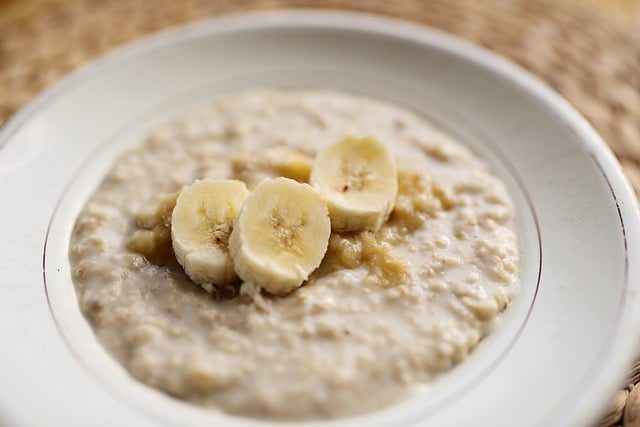
Homemade purée offers a nutritious and customizable option for baby food, allowing you to introduce your little one to new flavors and textures while ensuring they get the nutrients they need. Purée is ideal for making baby food with veggies, fruits, and grains, giving you control over the ingredients and consistency.
When making purée for baby food, keep in mind the cooking liquid, seasonings and flavorings, and straining and smoothing to create a smooth and creamy texture your baby will love.
Summary
From mastering puréeing techniques to trying popular recipes and discovering creative uses, we’ve unlocked the full potential of purée in this guide. With its versatility and ability to elevate dishes, purée is a culinary tool worth exploring. So, whether you’re whipping up a healthier alternative to mashed potatoes or creating a delightful fruit compote, the world of purée awaits your culinary creativity.
Frequently Asked Questions
Is it puree or pureed?
It is ‘pureed’ – the past tense and past participle of the verb ‘puree’, meaning to make a purée of.
What is considered pureed food?
A pureed diet consists of foods that have been ground, pressed, and/or strained to a soft, smooth consistency like a pudding. This includes cooked pasta, potatoes, rice, oatmeal, cream of wheat, meats, fish, and chicken, as well as other foods blended or strained to make them smoother.
Liquid additions such as broth, milk, juice, or water can make pureed foods easier to swallow.
What is the best way to achieve a smooth and silky purée?
For a smooth and silky purée, using a blender, food processor, or immersion blender is key. Straining the purée to remove any lumps or fibers can help finish off the perfect consistency.
Can I use purée as a base for sauces or gravies?
Yes, purée can be used as a base for sauces and gravies to add depth and richness.
What types of ingredients can be puréed?
Puréed ingredients can include cooked vegetables, fresh fruit, legumes, and grains – perfect for a wide range of dishes!
These ingredients can be used to make soups, sauces, dips, spreads, and even smoothies. They can also be used as a base for a variety of dishes, such as casseroles, stews, and more.
